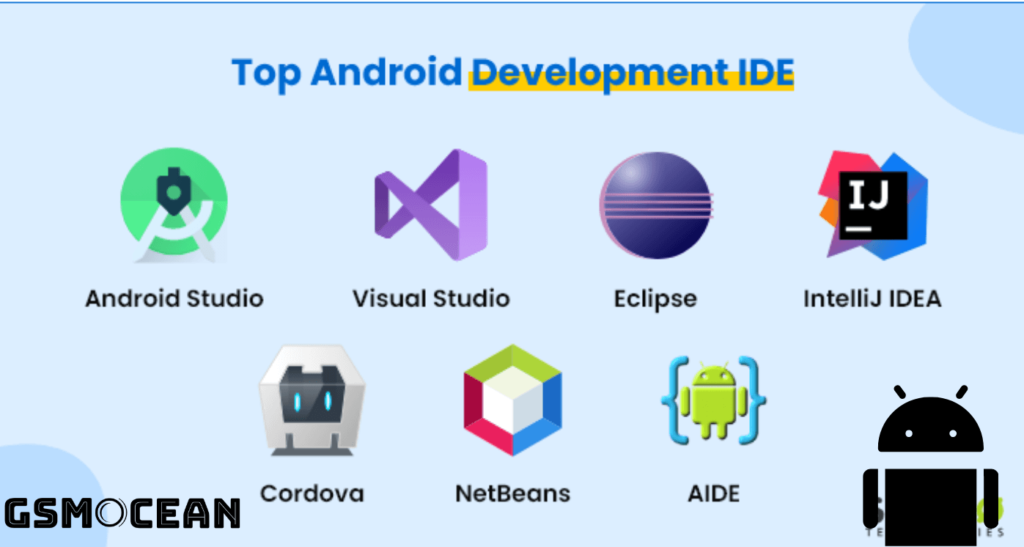Exploring the Best Android Emulator for Developers: Optimize Your App Testing Process 2024
In the mobile app development field, which is always growing and improving, developers are always in search of tools that can make the process of their work easier as well as make the applications they develop better. Among such tools, the Android emulator is one of the most important, as it helps to test and debug the applications on the virtual device that resembles an actual Android device. It’s not just about looking for a tool that will simply work and that is why the search for the best Android emulator is significant.
Given that Android devices come in different forms and with different specifications, the daunting task that developers are faced with is how to create apps that will work well on all devices. This is where the best Android emulator available in the market becomes quite useful. Due to the provision of a flexible yet controlled testing environment, the developers can test various models of devices, OS versions, and even network conditions, thus eliminating the need for numerous physical devices for testing.
This article will give a brief of the importance of the best Android emulator in the development of apps, important features that a developer should look for, how it can help in the development process, how to incorporate it into your development process, and some of the common problems that may arise when using an emulator and how to solve them. It is, therefore, essential to comprehend the functionalities of the best Android emulator for developers at any level.
Learning the Function of the Best Android Emulator in App Development

The best Android emulator is a very important tool in current application development as it gives the developers a strong platform to carry out their tests. It is software that helps to imitate an Android device on a computer in order to let the developers test the apps on a device-like platform. This is even more important because Android is used on a multitude of devices with different screen sizes, resolutions, hardware, and even different versions of the operating system.
Diverse Testing Environment
To the above, one of the major reasons why it is recommended to use the best Android emulator is that it provides an avenue through which one can test apps on numerous virtual devices. The emulator can be set by the developers to mimic various screen sizes, resolutions, and hardware options. This is very important since an application must work well on all the devices it may encounter when in the market. For instance, it is possible to check the performance of an app on a high-end smartphone with a large screen, and on a low-end device with a small screen and limited memory as well, using the same emulator.
Time and Cost Efficiency
It is vital to note that the best Android emulator saves time and money as opposed to the use of real devices. It is financially and physically strenuous to buy and store a large number of Android devices. Emulators are very helpful in this aspect because developers can easily change from one profile to another without having to buy new hardware. This helps in faster cycles of development since developers are able to notice and rectify the problem without having to test the application on physical devices.
Realistic Modeling of the Users
Emulators enable the developers to mimic user actions like touch, gestures, accelerometers, and networks. This is useful in determining the behavior of an app under different conditions and interactions with the user. Thus, with the help of the best Android emulator, developers can find out how comfortable their app is to use and improve it if necessary. For instance, they can check how an app works during network issues or when subjected to multiple gestures, thereby increasing the app’s reliability.
Debugging and Profiling Capabilities
Most of the best Android emulator comes with robust debug and analytical tools that help developers identify the areas of the application that are performing poorly. These tools help the developers to know how much memory is being used, how the CPU is performing, and how the network is being used by an application. Since logs are detailed and can be monitored in real-time, developers can identify the elements that consume much resources, and memory, or cause drains such as memory leaks as well as inefficient code, hence developing a more stable and efficient application.
In conclusion, it can be said that the best Android emulator is inevitable in app development. Thus, it enables developers to build quality applications since it offers a testing environment that resembles real devices. Ranging from simulating multiple devices to saving time and costs, the use of an emulator has proved evidently helpful and thus remains a crucial aid to any developer.
These are the essential features that one should consider when choosing the best Android emulator for developers.

To choose the best Android emulator for development, it is necessary to take into account some characteristics that meet the requirements of developers. However, not all emulators are the same and the number of emulators is quite vast. The best Android emulator should have the following features that can help improve the development process and guarantee that the testing process is smooth.
Performance and Speed
Among all the parameters of an Android emulator, performance is the most important one, and it defines which one is the best. In this regard, developers need an emulator that would efficiently and fast operate to help them test their applications without slowdowns. A high-performance emulator will allow a developer to concentrate on such tasks as testing and debugging instead of having to wait on the emulator to work. Search for emulators that take advantage of hardware acceleration to give quick and efficient simulations and less time to be spent on app compiles and touches.
Device Compatibility and Customization
Thus, the best Android emulator should be compatible with a vast number of devices and provide numerous settings to tweak. It should be possible for the developers to set up the emulator to work on almost any device, ranging from the latest high-end devices to the low-end ones. This is very important because an app must perform optimally on any device and on screens of different sizes. Furthermore, it is crucial to organize the ability to configure the device parameters like CPU, RAM, and Storage for an emulator so that it can be used to test applications that require numerous system resources.
Enabling for Multiple Android Versions
Considering the fact that there are many versions of Android available and in use, it is imperative that the best Android emulator should be able to support most if not all the versions of the Android operating system. As a result, developers have to verify the ways their apps function on various Android versions to avoid possible problems and identify the issues concerning concrete versions. A good emulator will allow the developer to have quick and convenient access to different versions of Android which will help the developer to test their application in different versions of Android without having to switch between them.
Integration with Development Tools
Compatibility with famous development tools is one of the significant factors that make a big difference when selecting the best Android emulator. Some of the best emulators to use should include those that are compatible with IDEs like Android Studio and Eclipse and build systems like Gradle. This integration helps in the development process of the application because it allows developers to deploy as well as test the applications right from the development environment. It is also possible to enhance productivity with the help of features like ADB (Android Debug Bridge) as well as the drag-and-drop APK installation.
User-Friendly Interface and Documentation
Ease of use and good documentation should also be among the features of the best Android emulator. The layout of the emulator should be intuitive so that the developers do not get lost in the myriad of options and settings. Good documentation and tutorials are always useful in minimizing the time taken to learn how the emulator works and, in turn, the best way to harness its full potential.
Therefore, to state the best Android emulator, it is crucial to look for various factors that help in identifying suitable features for developers. There is performance, compatibility with the devices, support for the Android versions, integration with development tools, and, of course, a clear and intuitive interface. Therefore, selecting an emulator that is good in these aspects will help the developers enhance the process of app testing and promote healthy app development.
Improving the development efficiency with the best Android emulator

Android emulators are useful in the development process and the best one is not only a tool for testing but for increasing productivity as well. Thus, it empowers developers to enhance their productivity and create better applications in a shorter amount of time. Below are some of the ways through which this best Android emulator can be of great help to developers.
Rapid Iteration and Testing
Among the advantages of the best Android emulator, the most important is the possibility to work and test quickly. In this way, emulators help developers to test their applications and their modifications without having to install them on actual devices. This makes it easier to provide immediate feedback to the developers to know the mistakes that they have made and correct them. Thus, shortening the distance between the changes done in the code and the testing of such changes helps the developers to make changes at a faster pace and thus make their application better in terms of quality.
Parallel Testing and Automation
The best Android emulator is capable of parallel testing as well as automation meaning that developers can engage in testing of numerous instances at the same time and also streamline certain operations. This feature comes in handy when working on big projects or when different individuals are developing different features of the app at the same time. Due to automation frameworks like Espresso or UI Automator, developers are in a position to write automated test scripts that can mimic the user actions and check the application behavior in various situations. This not only saves time but also helps in getting the same and expected results in every test conducted.
Collaborative Development and Testing
There is no doubt that the best Android emulator is the one that allows the team members to collaborate effortlessly in collaborative development environments. They can also share emulator configurations, test plans, and bugs found to help in the testing process and share knowledge. This is especially helpful for dispersed groups and in situations where it is not possible to use the same device as the testing environment. The emulator is therefore useful because it creates a common ground where teams can collaborate and develop excellent applications.
Real-Time Debugging and Profiling
The best Android emulator provides real-time debug and profile tools that will help the developers to easily spot and fix problems. Some of the debugging tools and performance monitoring features that are integrated into the app are used in analyzing the app’s behavior and resource consumption to determine areas of performance improvement. This real-time feedback helps the developers in improving the speed and efficiency of the applications which in turn enhances the usability of the application. Through using these tools, developers will be able to identify problems and come up with sound applications.
Continuous Integration and Deployment
Here, the best Android emulator should be the one that can easily be integrated with the CI/CD to make it easy to conduct testing and deployment. Thus, it is possible to include the emulator in the CI/CD processes to make sure that the applications are tested at all stages of development. An automated test can be easily executed with each code check-in, which would then highlight the problem areas in the application. This integration saves time and effort required to develop the code, decreases manual testing time, and definitely ensures that only good code is being released to the production environment.
Therefore, the best Android emulator accelerates the development process through quick and frequent cycles of development and testing, support for parallel and automated testing, collaboration, and easy debugging and profiling, as well as compatibility with CI/CD tools. Thus, using the emulator, developers can enhance their productivity, decrease the time spent on application development, and create applications of high quality that will satisfy the user’s needs.
An initiative to link the Best Android Emulator with your development process
It is, therefore, essential to understand how to incorporate the best Android emulator into the development cycle as much as possible for it to be of most help and with as little trouble as possible. The following are some fundamental ways of ensuring that integration of collaboration is well done.






Post Comment